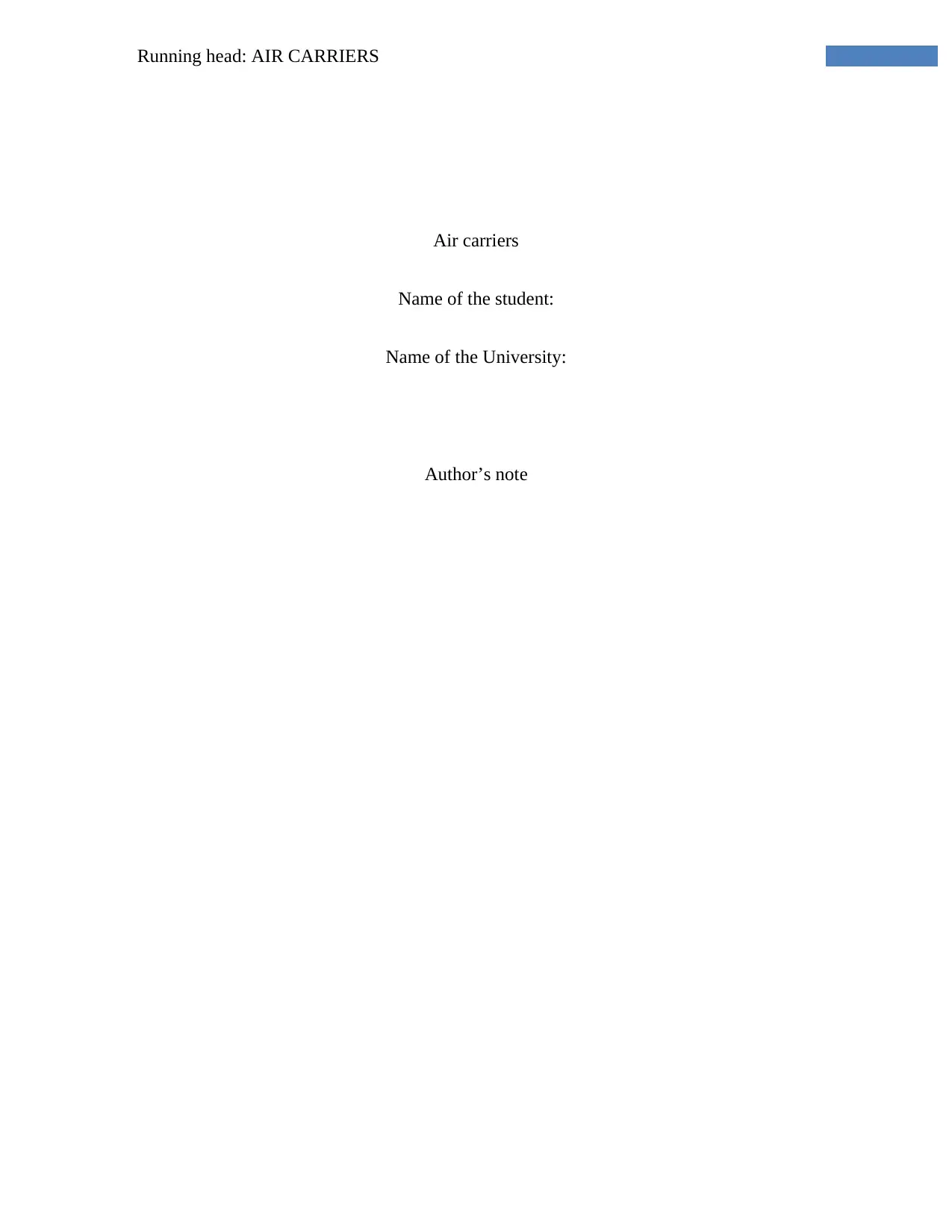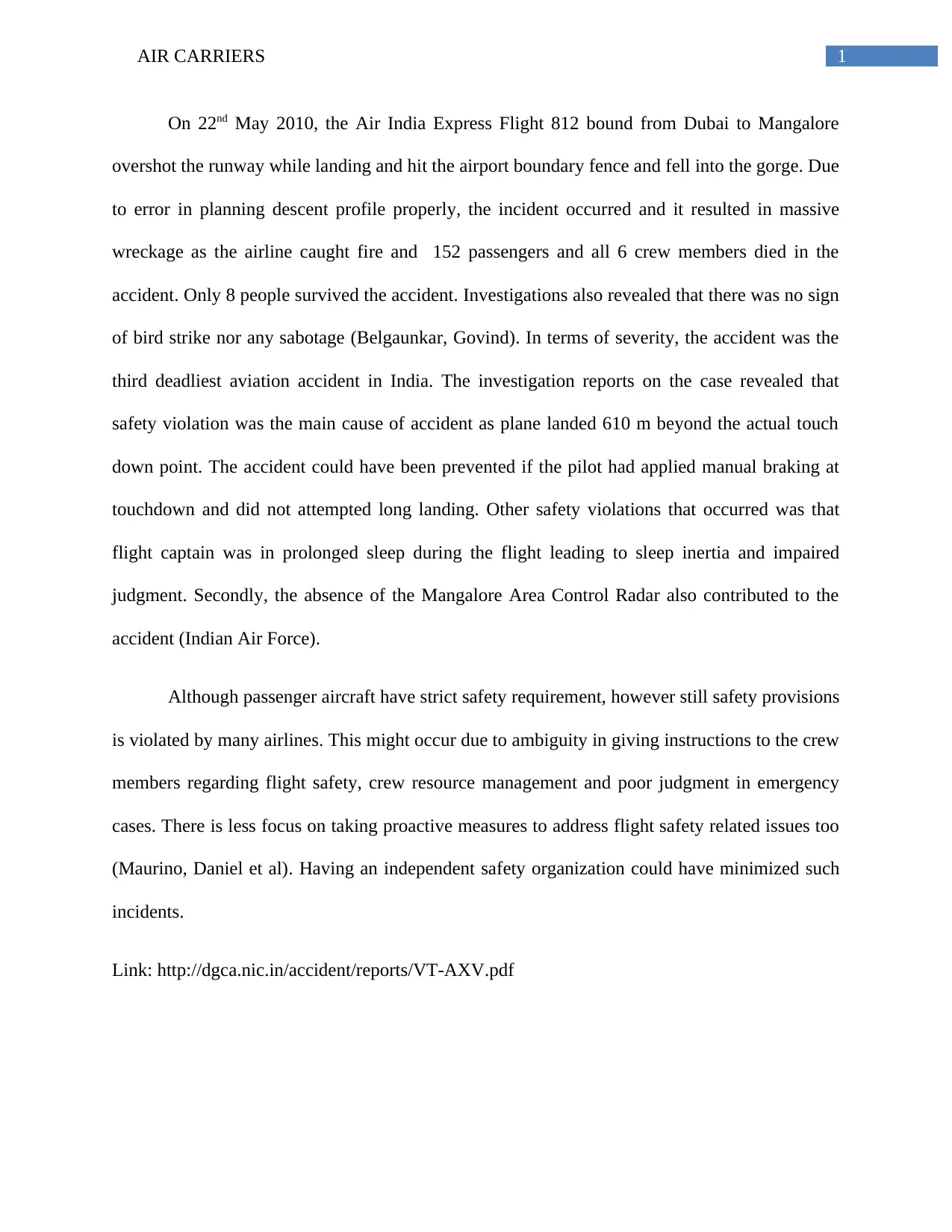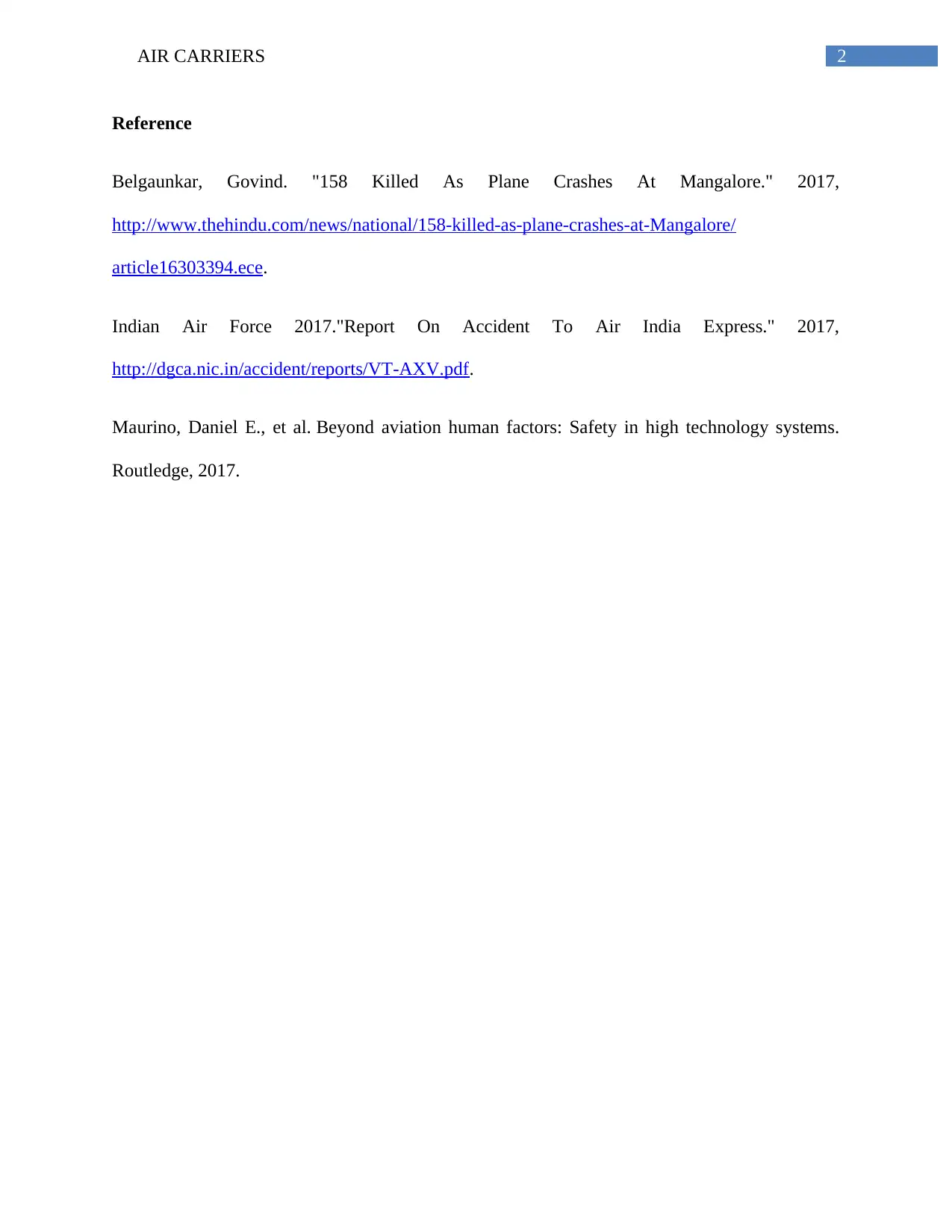Air Carriers: Aviation Accidents Analysis and Safety Report - Desklib
VerifiedAdded on 2020/03/28
|4
|380
|46
Report
AI Summary
This report analyzes the Air India Express Flight 812 accident, which occurred in Mangalore, India. The accident was caused by a combination of factors, including pilot error, specifically the captain's prolonged sleep during the flight leading to impaired judgment, and safety violations. The report highlights that the plane landed 610 meters beyond the touchdown point due to errors in the descent profile and the pilot's failure to apply manual braking, contributing to the accident. The absence of the Mangalore Area Control Radar also contributed to the accident. The report emphasizes the need for improved flight safety measures, including better crew resource management and proactive measures to address safety-related issues. The report also suggests the importance of an independent safety organization to minimize such incidents.
1 out of 4









![[object Object]](/_next/static/media/star-bottom.7253800d.svg)